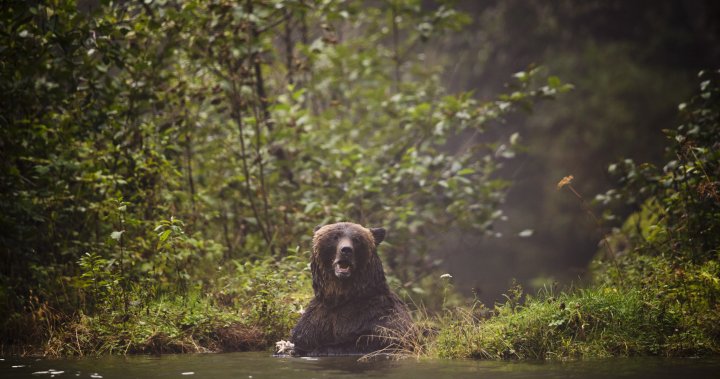In the remote wilderness of northern British Columbia, what began as a routine outdoor excursion quickly turned into a life-threatening encounter when a man was attacked by a grizzly bear last Thursday. Conservation officers have confirmed the incident was defensive in nature, highlighting the delicate balance between human activity and wildlife in Canada’s vast backcountry.
The attack occurred near Fort Nelson in northeastern BC when the man unexpectedly came upon a grizzly bear with cubs—a scenario wildlife experts consistently warn is among the most dangerous. According to the BC Conservation Officer Service, the victim sustained non-life-threatening injuries and was transported to a local hospital where he received treatment.
“When a mother grizzly perceives a threat to her cubs, her protective instincts trigger an immediate defensive response,” explained senior conservation officer James Barton. “These encounters, while rare, demonstrate why maintaining proper wildlife awareness in bear country is absolutely critical.”
This incident marks the fourth reported bear attack in British Columbia this year, according to provincial wildlife management records. Conservation officers have emphasized that the bear will not be euthanized as the attack was clearly defensive—a policy decision that aligns with Canada’s wildlife management protocols.
Wildlife biologists tracking grizzly populations in northern British Columbia note that seasonal factors likely contributed to the encounter. “Late summer and early fall represent a critical feeding period for grizzlies preparing for hibernation,” said Dr. Elena Kowalski, wildlife biologist with the Northern Conservation Institute. “During this hyperphagia phase, bears are more active and frequently forage in areas that might bring them into contact with humans.”
The BC Conservation Officer Service has implemented temporary trail closures in the area while conducting a thorough investigation. Officials have also increased patrols and warning signage throughout the region’s popular recreational areas.
For residents and visitors to bear country, this incident serves as a sobering reminder of established safety protocols. Wildlife management authorities recommend traveling in groups, making noise while hiking, carrying bear spray, and properly storing food and waste. These precautions can significantly reduce the risk of dangerous wildlife encounters, according to wilderness safety experts.
“Bear attacks remain statistically rare, but their consequences can be severe,” noted Barton. “Understanding bear behavior and respecting their territory is our best defense against future incidents.”
Local government officials have announced plans to host community information sessions on wildlife safety in the coming weeks, addressing growing concerns about increasing bear activity in populated areas as development continues to expand into previously undisturbed habitats.
As climate change and human expansion continue to reshape wildlife patterns across Canada, how will communities in bear country adapt their conservation strategies to balance human safety with the preservation of these iconic but potentially dangerous predators?










